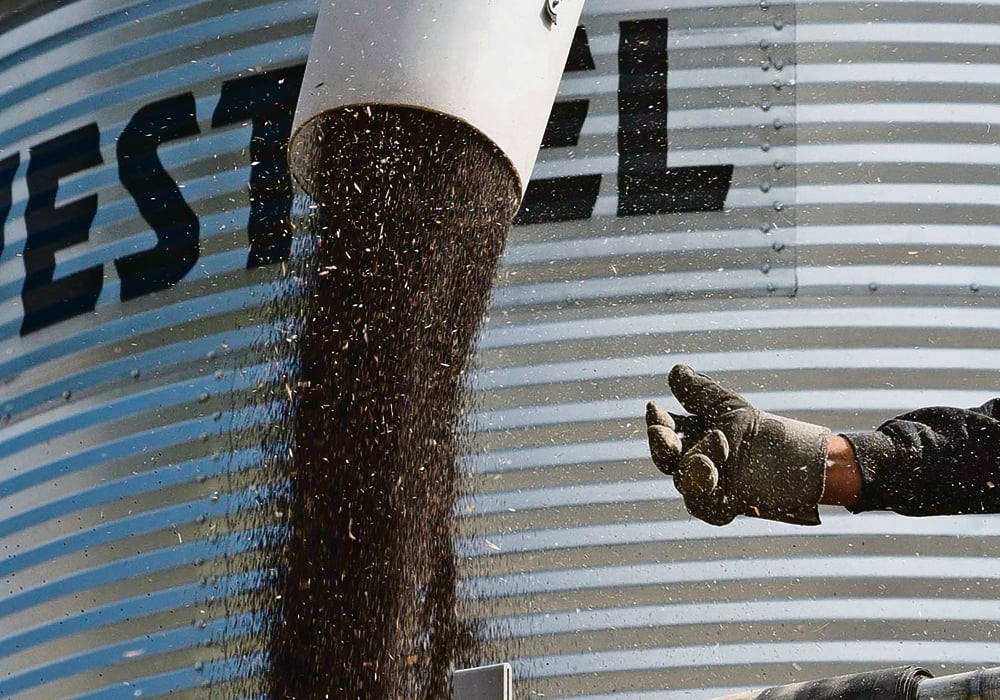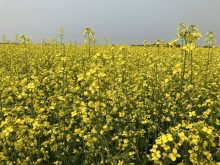Provincial yield estimates say 33 bushels per acre in Alberta and Saskatchewan
WINNIPEG — Crop analysts, production specialists and provincial crop reporters are all leaning in the same direction — the 2024 canola crop could be much smaller than anticipated.
It’s possible that canola production could be in the range of 17 to 18 million tonnes, significantly lower than Statistics Canada estimates of 19 million.
In late October, the provincial agriculture departments in Saskatchewan and Alberta released their estimates for average canola yields.
Read Also

Fertilizer method’s link to emissions studied
A researcher says others studying greenhouse gas emissions aren’t considering how the loss of nitrogen into the atmosphere correlates with fertilizer application or if there is an impact to yield.
In Saskatchewan, the final crop report for the year was published Oct. 30. It pegs the average canola yield at 32.7 bushels per acre.
The figure is almost the same in Alberta — 33 bu.
StatCan says Alberta and Saskatchewan farmers seeded about 18.7 million acres of canola.
Using the provincial estimates, it’s possible that canola production in Alberta and Saskatchewan is 14 million tonnes.
Adding that to potentially three million from Manitoba and the total is 17 million tonnes from the Prairies.
In September, Statistics Canada projected a canola crop of 18.98 million tonnes and average yield close to 38 bu. per acre.
Bruce Burnett, director of weather and crops information for Glacier FarmMedia MarketsFarm, said the provincial yield estimates are not as statistically rigorous as other sources of data.
However, the numbers are the “best data we have that is boots on the ground data.”
“Directionally, they (the provincial estimates) are certainly accurate,” Burnett said.
“Whether we come in with those (final) numbers or not (for yield), that’s another thing…. I think, directionally, this is right. We’re going to see a smaller crop than currently is being forecast.”
Glacier MarketsFarm recently reported that few traders have confidence in the 18.98 million tonne estimate.
It’s possible the canola crop could be 18 million tonnes or lower.
“I think the big question now is whether it’s going to be 17 (million tonnes) and change or is still going to be the low 18s,” Burnett said.
If the provincial yield estimates are correct, total production could be closer to 17 million tonnes because of challenging growing conditions this summer.
A wet spring followed by oppressive heat that arrived in mid-July hammered canola fields across much of Western Canada.
The crop didn’t develop sufficient roots in June, so when the heat arrived in July, canola plants couldn’t cope with the stressful conditions.
In recent years, farmers in north-eastern Saskatchewan have posted some of the highest canola yields on the Prairies, with many of them reaching more than 50 bu. per acre.
That didn’t happen this year, said a crop production adviser in the region.
The difficult weather conditions put a lid on yields. The Oct. 30 crop report pegged canola yields in northeastern Saskatchewan at 37 bu. per acre.
The crop adviser is confident the provincial estimate of 33 bu. is correct or very close. The province has a team of crop reporters — mostly producers — who cover the range of soil types of geographic regions of Saskatchewan.
Statistics Canada will release its official production estimates for canola and other crops in December. It’s a safe bet canola will be much lower than 18.98 million tonnes.
“The provincial governments have a pretty good handle on which direction this yield is going to be going, for the final report,” Burnett said.
“Some other data is starting to show that the canola yields are lower than those original StatsCan numbers.”
Contact robert.arnason@producer.com


















